Contents
Psaritella chestnut, or homophron, belongs to the class Psaritella and forms a separate genus Homophron. Mushroom pickers rarely collect this gift of nature. And for commercial purposes, psaritella is not cultivated.
Where do chestnut psatirrella grow?
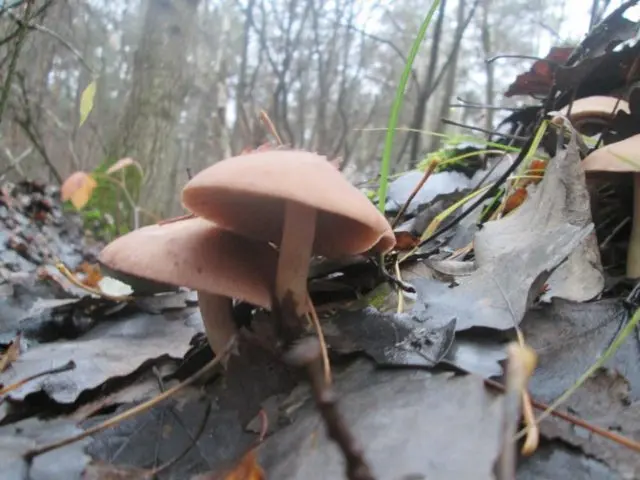
In deciduous forests on woody remains of birches and aspens, chestnut psaritella can be found from the end of June to mid-autumn. In regions with a warm climate, the mushroom can be found even in November. Chestnut homophron grows in groups and bunches around deciduous trees and on the lower part of the trunk.
What do chestnut psatirrella look like?
Psaritella chestnut cannot be confused with other members of the family. Thick (slightly less than 1,5 cm), curved or twisted velvety stem has longitudinal stripes. The mushroom can reach a maximum height of 10 cm, but usually grows up to 6 – 7 cm. Its flesh is tough. The leg can be hollow or filled. Its color is white or cream.
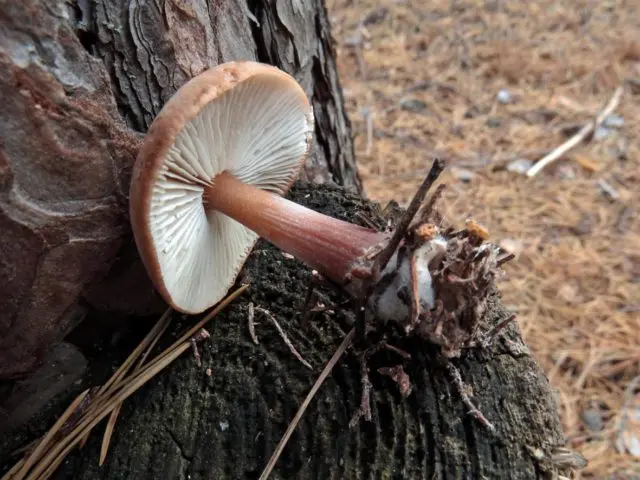
The color scheme of chestnut psaritella varies from light beige to reddish brown, depending on age and weather conditions in the place of growth. In young specimens, the cap is rounded-convex, with smooth edges. As it develops, the shape changes and may become flat. At the same time, the edges of the cap become pubescent, and a small tubercle appears in the middle. The pulp of the mushroom is dense, thin. Dimensions – do not exceed in diameter from 3 to 9 – 10 cm.
Psaritella chestnut belongs to lamellar species. The reverse side of the cap is covered with weakly adherent and loose plates, which are often located. Their color varies from dull light to dark beige, depending on the ripeness of the spores.
Is it possible to eat chestnut psatirella
Like most species of the Psaritelov family, biologists refer to this species as edible. Scientists argue that with minimal heat treatment, the mushroom cannot have a negative impact on health. Most mushroom pickers do not collect chestnut homophron because of its unprepossessing appearance and fear of making a mistake. It is quite difficult to distinguish psaritella from poisonous representatives of the mushroom world. It is often confused with false mushrooms, which are dangerous to health.
In encyclopedias about mushrooms, chestnut psaritella is mentioned as a species suitable for food.
The taste of the mushroom
The fruit body of chestnut psaritella does not have a pronounced mushroom taste and smell. It contains too much tannin, which causes an astringent sensation in the mouth after eating the fruiting body. The taste of psaritella is chestnut bitter.
The opinions of mushroom pickers about the gastronomic features of the mushroom are diametrically opposed. Some believe that pickled psaritella will outshine many more valuable species with its taste. Others are sure that this chestnut variety should not be collected, because bitter and astringent mushrooms are not suitable for cooking and preparations for the winter.
Benefits and harm to the body
Very little is known about the qualities of chestnut psaritella that affect human health. Due to the lack of commercial interest, studies were not carried out. Therefore, the harm or benefit to the body can be judged by the reviews of mushroom pickers who are fond of collecting representatives of this species.
The fruiting body of chestnut psaritella contains a little-studied antibacterial substance. In this regard, caution requires eating mushrooms for people with impaired functioning of the digestive tract.
False doubles
Psaritella chestnut has practically no twins. Experts believe that it is unlike the representatives of its class.
Lepista dirty
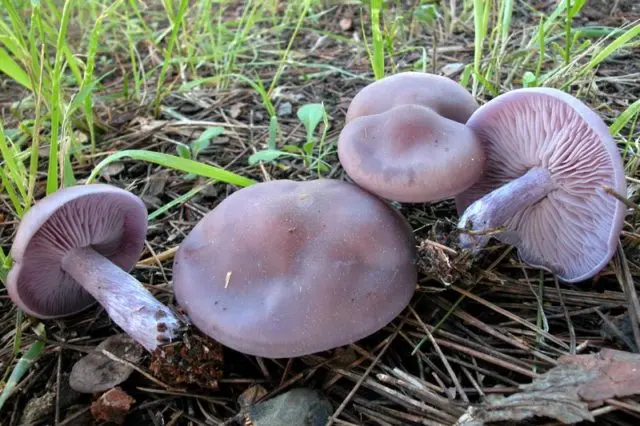
Lepista, or weed row, from the Tricholomov family, beginners may mistake for chestnut psaritella due to the similarity in color and shape of the cap, especially during the period of full development of the fruiting body. But experts note. This row has a purple hue, which distinguishes these two types of mushrooms. The foot of the lepista is not painted with longitudinal stripes. In the places of growth of the dirty row, it is found in small colonies. A distinctive feature of this species is the fusion of hats with each other.
Collection rules
Psaritella chestnut is harvested in the middle of summer. The mushroom easily tolerates transportation. Mycologists advise paying attention to young specimens. Cut off the psaritella with a knife, trying not to damage the mycelium, which is located close to the surface.
Mushrooms quickly lose their presentation, so it is not recommended to store them unprocessed for more than three hours.
Use
For eating, chestnut psaritella is boiled for no more than a quarter of an hour. The liquid after the initial treatment must be drained, and the mushrooms washed in running water.
Before cooking, it is necessary to thoroughly rinse the fruiting bodies in order to clean the lamellar lower surface from small litter. You can soak the mushrooms for an hour or two in salt water (a tablespoon of salt per liter) to remove the bitterness from the fruiting bodies.
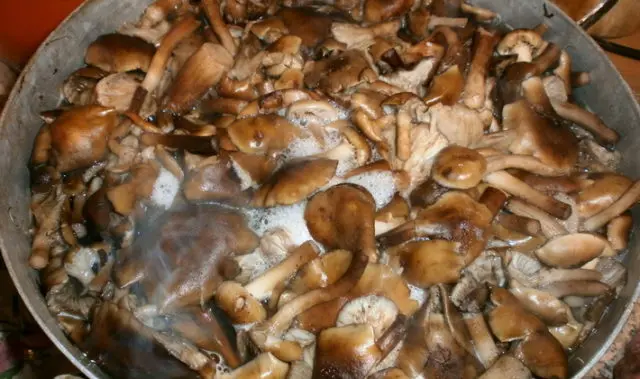
You can pickle psaritella hot or cold. To do this, in a brine of 1 liter of boiling water and 1 tbsp. l. spices (peppercorns and bay leaves) are added to the salt and pre-boiled mushrooms are laid out.
Prepare the marinade for 10 minutes. after boiling, constantly removing the foam. At the end of cooking, add 1 tsp. l. table vinegar. You can use the preparation in a day. Store pickled psaritella in hermetically sealed jars for no more than six months in a cool place.
You can freeze boiled fruiting bodies for up to 3-4 months. To do this, mushroom raw materials are prepared in the usual way and laid out in portions in containers or plastic bags. With further use, the mass is released from the container and lowered into boiling brine.
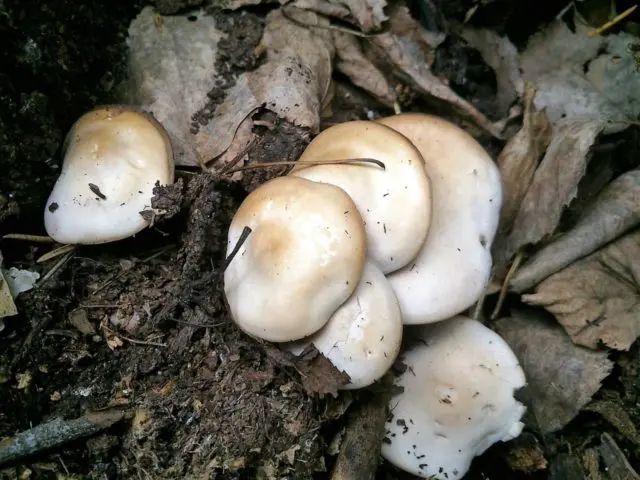
Conclusion
Psaritella chestnut rarely hits the table. The weak aroma and bitter taste of fruiting bodies is not popular. But there are gourmets who love and appreciate the unique taste of this type of mushroom.









